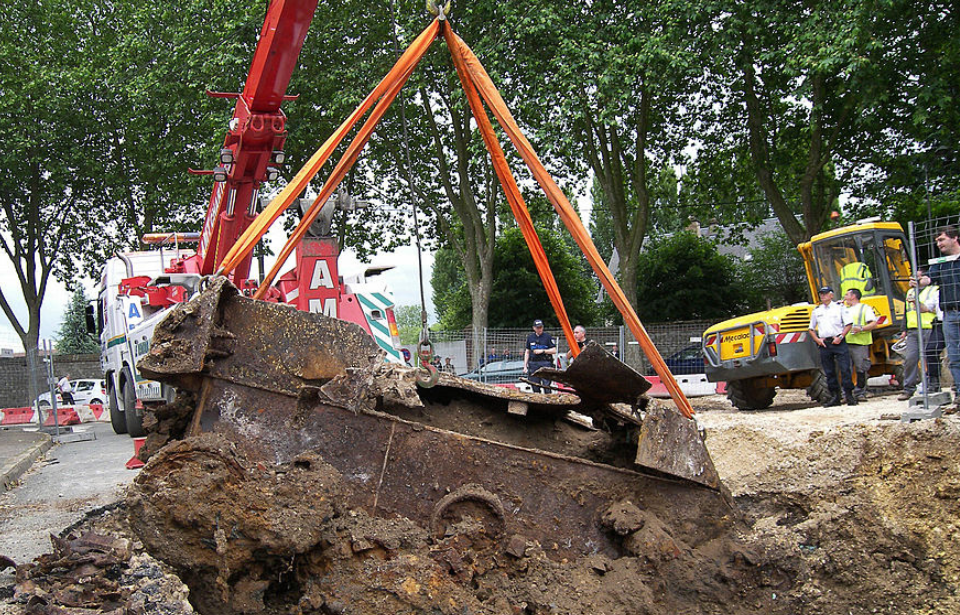During the six years that made up the Second World War, the Allied and Axis nations deployed an astonishing number of troops and armaments across Europe and the Pacific. They engaged in countless battles, so it’s no wonder that, decades later, remnants are still being dug up. While the most common are hand grenades, land mines and other types of debris, larger artifacts from the time period have been found, as was the case in the French city of Chartres.
Chartres during World War II
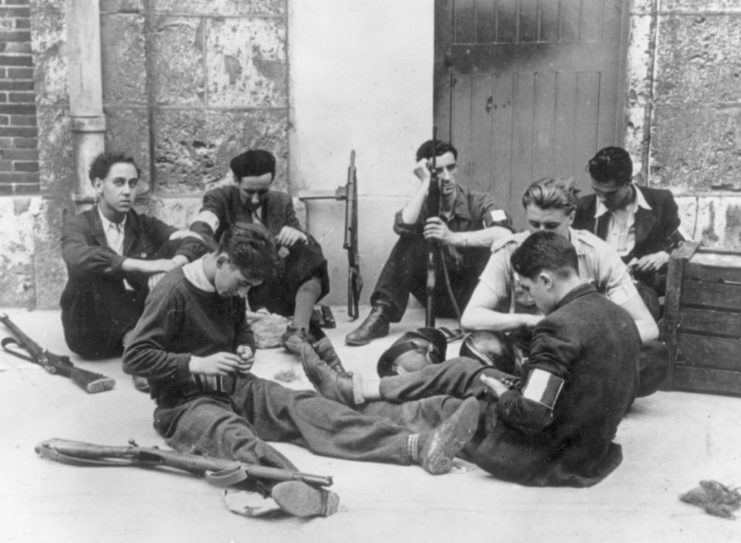
Chartres is no stranger to conflict, having experienced it for decades, and this was no different during World War II. It was one of many European cities to suffer heavy bombings during the early years of the conflict, and it was also the site of intense fighting in August 1944, just over two months after the D-Day landings at Normandy.
It was the Americans who first arrived in the city, with orders to chase out the Germans and destroy its towering cathedral, which officials suspected was being used as an observation post. On August 16, Col. Welborn Barton Griffith, Jr., a liaison officer with the XX Corps, questioned if this was necessary and, instead, volunteered to run behind enemy lines to find out if the church’s bell tower was harboring enemy troops. When it was determined to be clear, the order to destroy the structure was canceled.
While the cathedral was clear of German soldiers, the rest of Chartres was not. Teams from the 3rd Cavalry Group and the 1139 Engineer Combat Group subsequently conducted reconnaissance on the city, after which fighting broke out between both sides, with the Americans assisted by the Free French and the French Resistance.
On August 18, the 5th Infantry and 7th Armored Divisions, under Gen. George S. Patton‘s US Third Army, liberated Chartres. The city’s fall was just one of many of armed meetings between the Allies and Germans that eventually led to the liberation of Paris.
An amazing discovery beneath the streets of Chartres
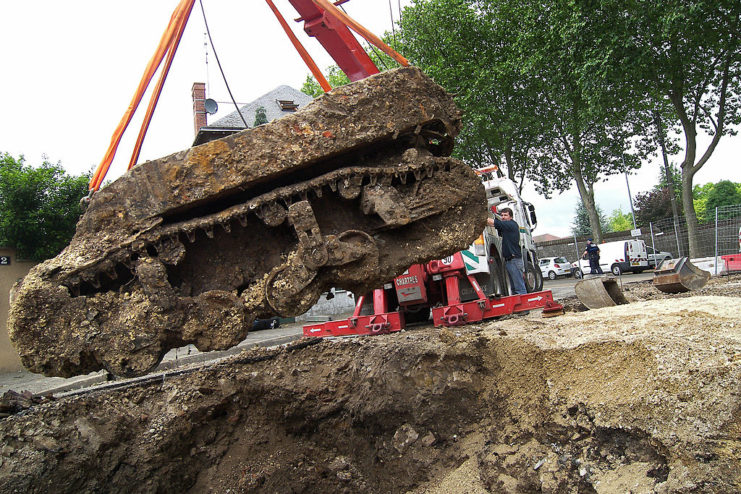
Fast forward to 2008, when a team of road workers in Chartres were conducting routine maintenance in the city. The crew were in the midst of digging when they ran into what looked like a giant machine located in the area where they’d excavated, near the famed cathedral.
Unsure what it was, the workers attempted to lift the vehicle into their truck, but found they were unable to and enlisted the help of a mechanical digger to pry the metal beast from the ground. While they were able to get it out, they still needed insight from an expert or two to figure out just what, exactly, they were looking at.
As it turns out, the discovery traced all the way back to Chartres’ liberation during the Second World War.
A long-lost M5 Stuart
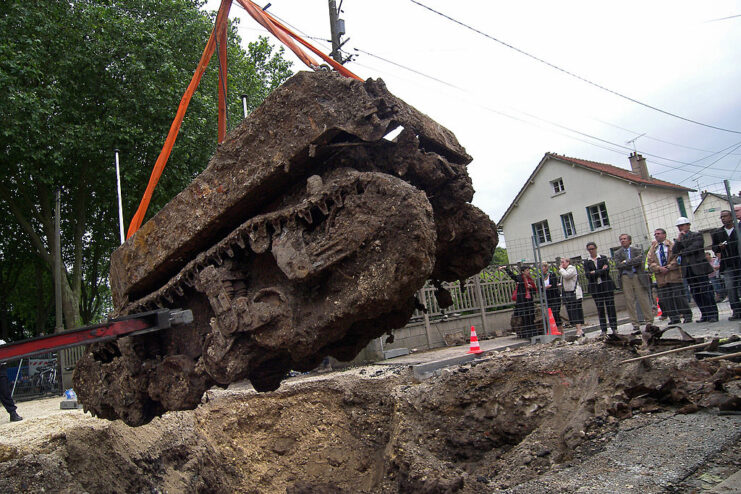
According to the experts, the unknown vehicle was an American tank that had seen action during the liberation of France in 1944. Astonishingly, they were able to locate witnesses who’d remembered seeing the vehicle during the liberation efforts, operated by US troops.
The M5 Stuart light tank, as they identified it, had served with Maj. Leslie Lohse of the 31st Tank Battalion, 7th Armored Division, who’d helped with the liberation of Chartres. The tank was the first to enter the city during the Allied liberation efforts, but it was abandoned while on a reconnaissance mission, with witnesses stating it had either slipped off of its tracks or ran out of fuel.
When World War II was over, the M5 was pushed into a bomb crater and buried, as a means of clearing the road. For the next eight decades, it remained beneath the ground, with few aware of its existence.
The M5 Stuart was a variant of the M3
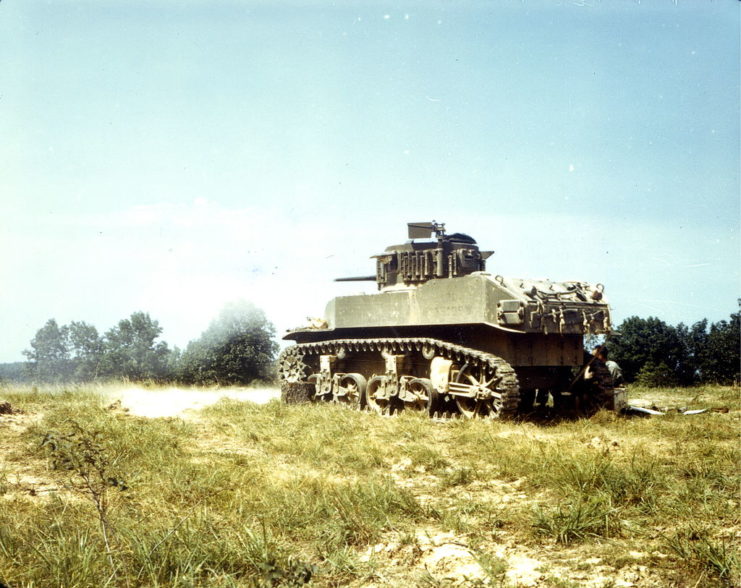
The M5 Stuart was developed by the Americans in 1942 as an improved version of the M3. As a result of the increased demand for radial aero-engines, which were in short supply, the US military wanted to develop a tank that could operate with another engine. One designed by Cadillac, the V8, was chosen to power the new armored vehicle, which also featured a redesigned hull.
By the end of the Second World War, 2,074 M5s had been produced. While a good tank, it was rather small, compared to others.
More from us: K2 Black Panther: One of the World’s Most Expensive Tanks
It’s not unusual that the discovery made in Chartres was an M5, given it was readily used by the Americans during their push into France. However, it was a poor match for enemy vehicles, as it was only equipped with a 37 mm cannon, compared to the 88 mm ones many German tanks were equipped with.
